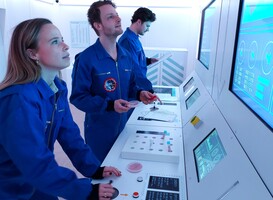The euro is not particularly strong at the moment. In the last year it has lost around 10% against the dollar. It lost even more against the Chinese yuan. But what are the factors that essentially determine the euro exchange rate?
The exchange rate of a currency depends on many factors. Basically, the value can be determined with the simple principle of supply and demand. But then you quickly get to the question of what’s driving supply and demand.
In this article, we look at the main factors that make up the supply and demand of the euro and thus determine the value of the currency.
The ECB regulates the supply of money
In countries where the euro is the currency, the European Central Bank (ECB) regulates the money supply. This can be done through interest rates or by spending more money. For example, if the ECB increases the key interest rate, loans become more expensive and are used less frequently. This reduces the amount of money banks can create via their multiplier. Because the fewer loans are granted, the less money is generated by the granting.
As a further instrument, the ECB itself can ‘print money’. It does this either by actually printing banknotes or by lending money directly to banks. These can then continue to lend to companies or individuals without having to maintain the minimum reserve. This gives banks more freedom, since in this case no money deposits have to be held as a counterpart.
Demand helps determine the euro exchange rate
On the other side is the demand for the euro. This is also one of the main factors that determine the euro exchange rate. But what exactly does it mean when you talk about demand for a currency?
The demand for a currency is related to the demand for goods from the home country of that currency. For example, if many Americans want to buy a German car, they need a lot of euros to pay for it. This increases the demand for the euro and it increases in value as long as the supply remains unchanged.
However, this trend can also go in the other direction. If the demand for products from the euro area falls, then the value and thus the exchange rate of the euro will also fall. Because of this, historically, the currencies of countries with strong industries have always been relatively stable. While smaller countries with sluggish industries experience greater volatility depending on the current situation.
Forex traders are also a factor
Sometimes the exchange rate of the euro also changes when nothing has happened yet. This is often due to expectations when trading forex. Because retailers also look at expectations for future developments and can thus influence demand. If a currency is expected to depreciate, forex traders will sell their positions, lowering the exchange rate. For example, this is right after Brexit– Referendum done.
But this is exactly how forex traders can drive a currency’s price. If you assume that production and demand for a country’s goods will increase, then the exchange rate will also increase. Traders want to seize this opportunity as early as possible and buy the currency, which is still undervalued, at an early stage. The currency is then exchanged for another at a profit.
Foreign exchange trading is also known as forex trading and even offers private individuals the opportunity to earn money from the exchange rate. This is the one Best Forex Brokerwith which you can also participate.
Political events can also have an impact
Another important point is political events. Over time, these could repeatedly lead to shocks that weighed on both the economy and the currency. So it often happened in history that countries started to print money in times of war so that the state could buy more in the short term. But the value of the currency fell very quickly.
These events are much rarer these days. But a country’s political stability should never be underestimated as a factor. After all, there is nothing to be gained from holding a currency if a country’s government is unpredictable.
Other factors that determine the euro exchange rate
There are certainly other factors that determine the euro exchange rate. However, we believe that the most important of them are described in our article. In the end, it mostly comes down to supply and demand. Because this always determines the value of a currency.
We were also able to briefly explain the question of which factors affect supply and demand. Here, a clever central bank and a strong industry are essential. As long as these two factors are present, a currency is difficult to shake.
“Unapologetic Analyst. Angry humble coffee evangelist. gamers. Can’t type with boxing gloves. College student. Entrepreneur.”
—-
–


